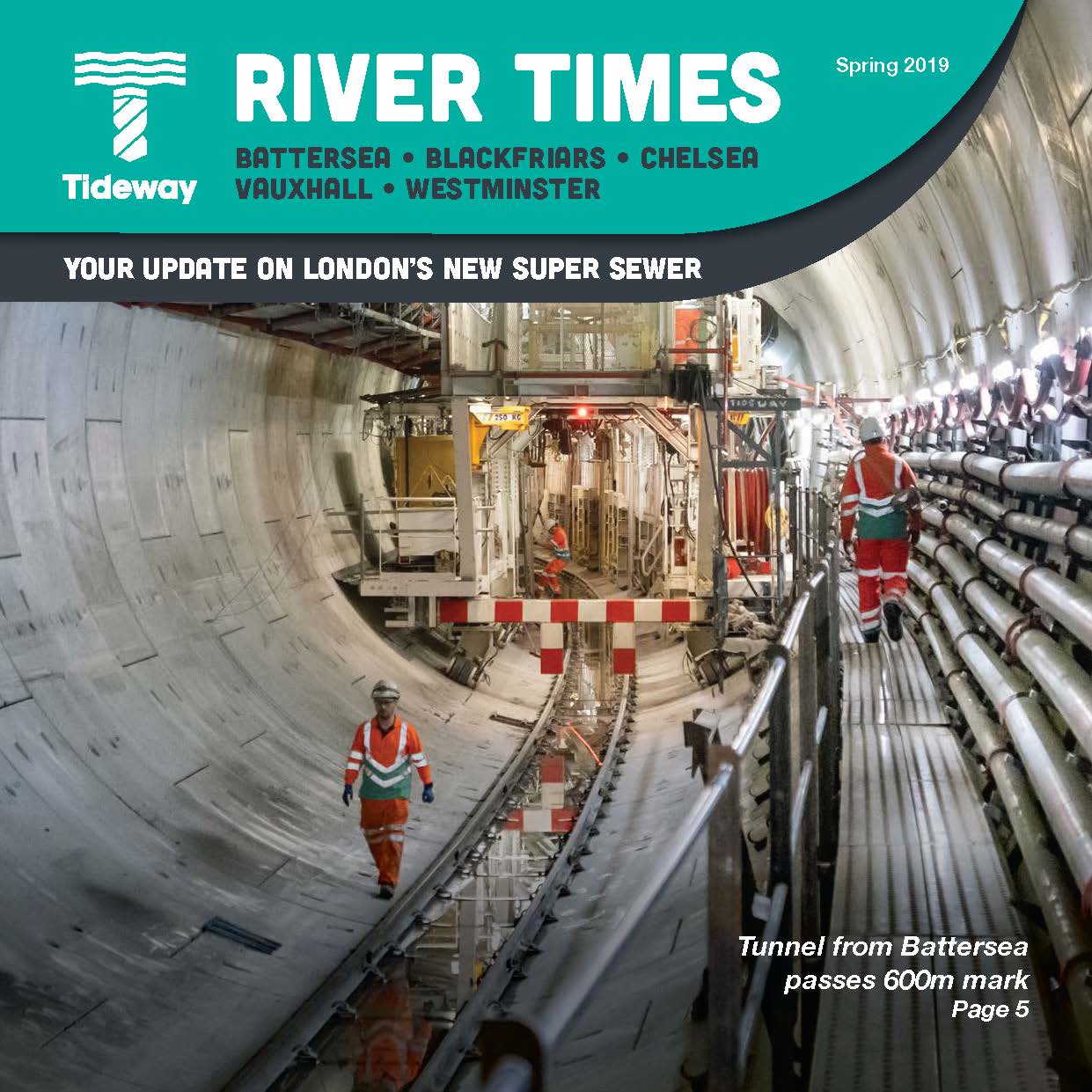Thames Tideway “super sewer” beneath London
The Thames Tideway scheme, which combines upgrades to London’s three main wastewater treatment plants (WWTPs) with the construction of a nearly 35-kilometre-long storage-and-transfer tunnel, is one of the city’s most optimistic wastewater investments since the city’s first sanitation infrastructure in the mid-nineteenth century. Although the brick-built sewers are still in good condition, over the years the growth in population to some 9 million means the old canals are completely overloaded: The river collects 32 million cubic metres of raw sewage each year.
A Grand Engineering Project
The Tideway will span 25 kilometres from Acton in the West London Borough of Ealing to Beckton Sewage Treatment Works in the East London Borough of Newham and Greenwich, reaching depths of up to 60 metres below the surface and split between 3 sections – West, Central and East.
The tunnel is expected to take eight years to build and would improve the capability of London’s sewer network and avoid sewage discharge into the River Thames. In addition to decreasing the risk of inclement weather overflows, the work will allow more water to be processed to a better standard, per Thames Water’s policy goal of cleaning up the river and enhancing water and environmental quality.
Tunnelling London’s Super Sewer
The tunnel will be up to 67 metres below ground for most of its journey, commencing at 40 metres in Hammersmith and falling to about 80 metres in Beckton. The tunnel and a series of cleverly placed access holes will be built by Tunnel Boring Machines, with excavated material carried by barge down the river to minimize unnecessary road haulage. It will be lined after it is finished to separate it from the surrounding ground and prevent seepage.
TBM Rachel was the first machine in the Thames Tideway Tunnel West Section. In 2018, the 1,350-ton, 8.1m-diameter machine started its underground journey from Carnwath Road Riverside to Acton at a depth of 35 meters.
December 2020, TBM Annie, the third 6.4m Mixshield machine started construction of the 4,615-meter-long Greenwich connecting tunnel at the Greenwich pumping station. It connects most of London’s southeast at Chambers Wharf to the Thames Tideway Tunnel.
The second of the giant machines, Ursula, has been tunnelling from Battersea for the past two years and has now broken through to Bermondsey.
Final Tideway TBM
The final TBM, named Selina, will see the final push of the Super Sewer which began in January 2021 at a depth of 60 meters: digging the eastern, deepest tunnel stretch over a length of 5,530 meters – from Chambers Wharf to Abbey Mills Pumping Station, 66 meters below the city.
The tunnelling construction is expected to be completed in 2023, with all testing and commissioning work completed by 2025 and the sewer operational.
The project also aims to construct a strategic north-southconnection through the Lea Valley to theThames viaa new linear parkway, dubbed the “Fatwalk”, that will connect and unite six separate park areas. There are additionalproposals to open up public spaces and listed buildings which will be combined to form aseries of new open spaces as part of the future of Lea River Park.
Transforge (UK) Ltd
Discover the comprehensive manufacturing component solutions for the tunnel boring industry.
Transforge (UK) Ltd has become an established manufacturer of bored tunnel components for civil, mechanical and electrical engineers throughout the whole tunnel excavation and underground infrastructure tunnelling and fit-out process.
We’ve designed and manufactured a range of equipment and components for tunnelling projects including:
- Utility cable and pipe supports
- Slurry pipe brackets and accessories
- Ventilation supports
- Emergency walkway systems and platforms
- Track, Sleepers and accessories
- Shaft Steelwork
- Structural steelwork to BSEN1090 EXC 3. (Execution Class 3)
CONTACT
If you would like to get in touch about a tunnelling project or tunnelling components, please do not hesitate to contact us.

